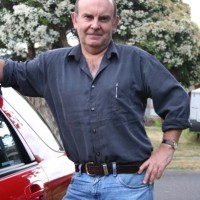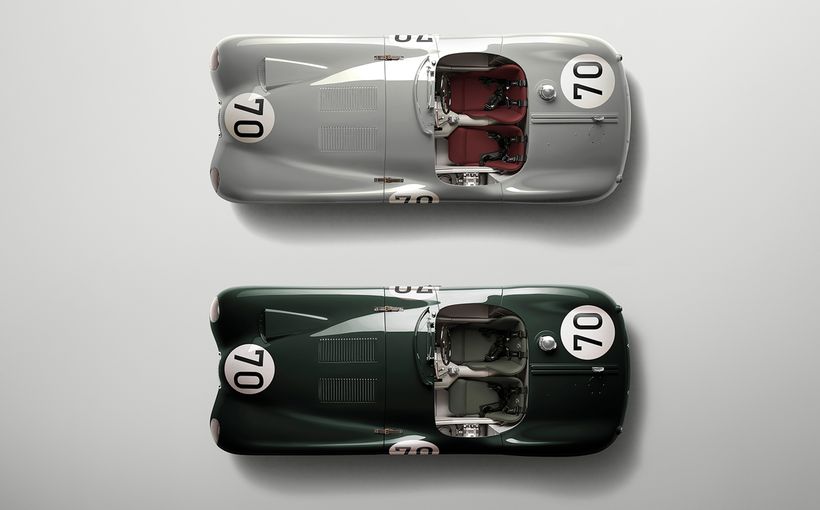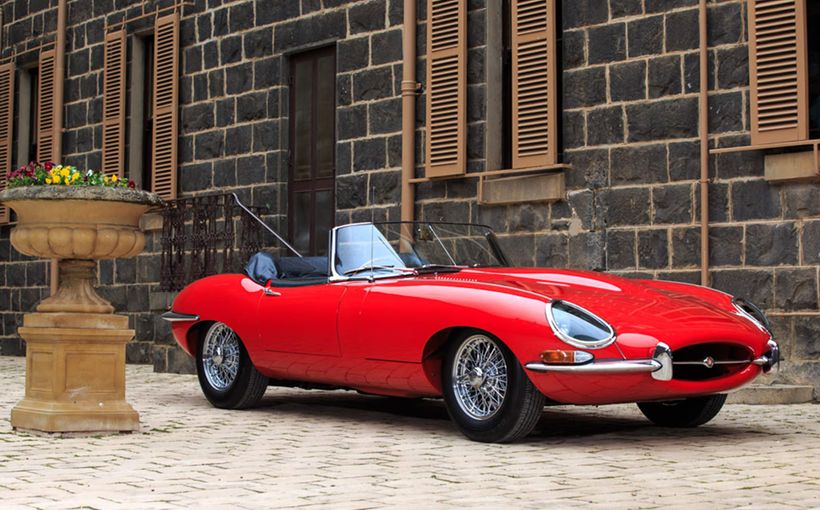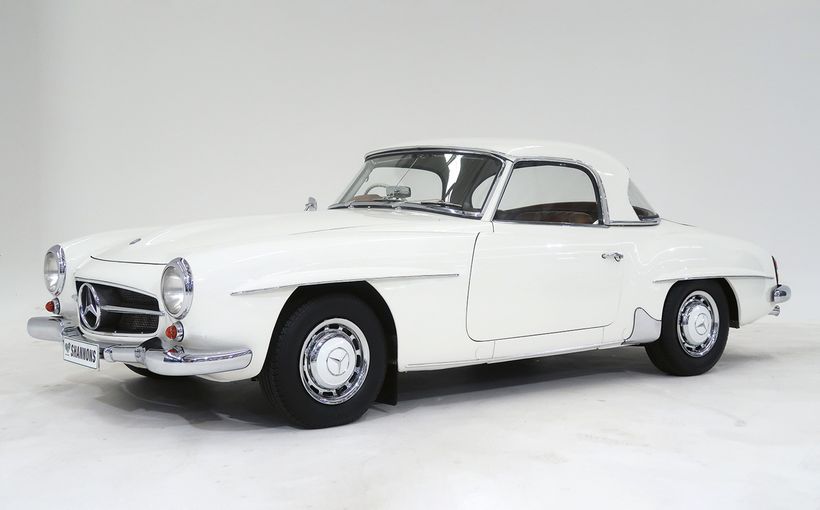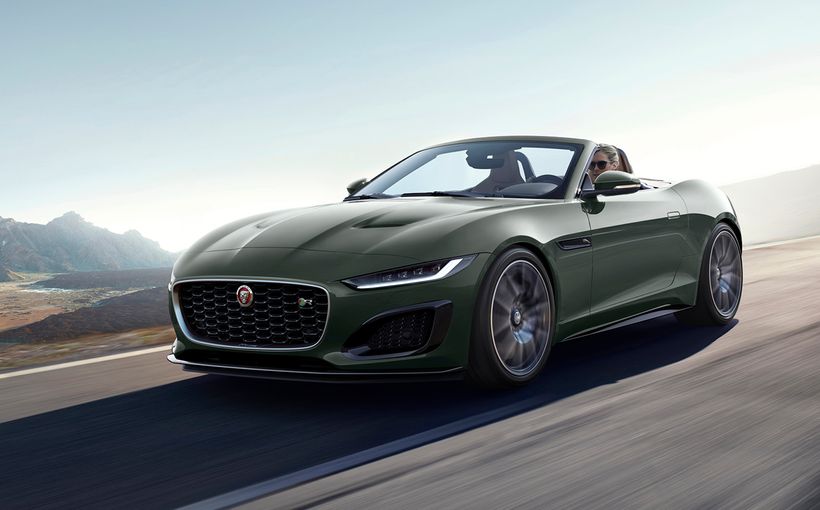Jaguar XJS: Scruffy Alley Cat or Pedigreed Feline?



The Jaguar XJ-S bombed spectacularly on its 1975 launch with fewer than 15,000 sales globally in its first five years. But it then took off just as dramatically for a 21 year production run of 115,413 cars and an unbeaten model life for a Jaguar. Yet the answer to both questions has to be a yes.
In the best tradition of stories like “Trading Places”, there was a fine line between the mongrel Jaguar XJ-S that didn’t sell and the pedigreed XJ-S later so coveted globally.
The XJ-S and its changing fortunes is one of the most curious automotive stories not often told. Because the model’s track exposure cannot account for such a long term turnaround, the story is quite complex.
The Jaguar V12 and the Missing Entry Version
The XJ-S should have been a runaway success the instant it appeared. It offered exotic V12 mechanicals in a coupe with benchmark ride and handling with an unprecedented entry figure for a V12.
Yet Jaguar’s new V12 was both its greatest strength and weakness at a time when big, thirsty engines were falling out of favour.
Jaguar led a charmed life on the back of its 1948 twin-cam inline six. Its expansion to 4.2-litres was not entirely successful as it cut refinement and exposed the once bullet-proof engine to head gasket, water jacket and head stud issues never fully resolved.

Jaguar knew it would soon need extra capacity to cover coming emissions laws, which would add to any head gasket and cooling issues.
Jaguar was ultimately forced to court Leyland for the development funds to produce the XJ6. Canny Jaguar insiders anticipated they could be forced to adapt the Rover V8, a short, slippery slope they anticipated would have seen Jaguar reduced to a badge-engineered Rover.
By developing a narrow and low 60-degree overhead-cam V12, Jaguar was able to preserve the big cat’s exclusivity. Yet it was almost the undoing of the company. The SOHC 3.5-litre V8 spin-off planned as an option didn’t work with the 60-degree vee angle. This would later prove critical in the initial sales failure of the XJ-S.
Before the XJ6’s release, Jaguar had experimented with a V12 engine for extra performance based on a 1950s racing idea of combining two twin-cam sixes.
This engine later appeared as a 5-litre V12 in the radical but stunningly beautiful XJ13 mid-engined sports prototype in 1966 with quad cam heads based on the XK design. It was a blind alley.
The production V12 was then developed by Walter Hassan and Harry Mundy, both inherited by Jaguar after its takeover of the Coventry Climax fire pump and race engine specialists.

To contain costs, weight and width, the new engine had single overhead camshafts driven by chains and slim, shallow heads that mated flat to the block. Valves were organized in the same orderly line that you would expect in a pushrod engine, not an exotic V12.
A far cry from the inclined valve, hemispherical cross-flow layout of the Jaguar six, the V12’s combustion chambers were in the top of its pistons. It wasn’t even a proper cross-flow design despite the inlet and exhaust ports on opposing sides of the head.
Yet the basics were outstanding. Alloy construction with steel wet liners, seven bearing crankshaft and it was so compact, that it was barely wider than the six. The main complication was the bucket and shim tappet adjustment, similar to Fiat practice at the time. Another weight and space-saving measure, it dictated lifting of the camshaft during adjustment.
Hassan and Mundy were no fools and knew better except this engine had to fit within the lacework of the E-type’s tubular front frame. Its first rescue mission was the V12 E-type in 1971, a model critical to buy time for Jaguar’s next sports car.
The XJ12 Series I that followed in 1972 allowed Jaguar to offer a new prestige model to replace the ageing Mk 10/420G. Adding just 36kg over the 4.2-litre six, the V12 was designed to fit any Jaguar six cylinder engine bay and would do so until it ended in 1997.


These early applications featured quad side-draught Zenith-Stromberg 175CD carburetors similar to those fitted to local LJ GTR XU-1 engines. Unlike most vee engines, these carburetors were mounted outboard of each head and not in the valley to maintain Jaguar’s sleek bonnet lines.
This further defined the new V12 as a slogger, albeit a turbine-smooth one, as the long inlet tracts enhanced torque at low revs but didn’t encourage the engine to breathe.
For the XJ12, it was a perfect limousine engine. For the relatively light E-type, it didn’t matter. It encouraged claims that the E-type was one of the few cars that could start off in top gear then race to 150mph/240km/h without a single gear change.
The extra 320kg of the XJ-S made it too heavy for this party trick.
The Lucas Opus electronic ignition (which cooked itself to death in its original location) was later joined by Lucas fuel injection based on the Bosch D-Jetronic system for the 1973 XJ12 Series II.
The XJ-S if nothing else featured an engine that had undergone four years of customer development, an important consideration for a British car!

Again, the twin injection plenum chambers were outboard of the heads feeding into long inlet tracts for the same easy-going character as the carburettor version. As fitted to the XJ-S, the fuel-injected version countered some of the extra weight but could do little for fuel economy.
Although the XJ12 and E-type sports car market might have tolerated single digit fuel economy (its ability to slurp fuel below 10mpg/28L/100km was legendary), placating the long distance GT 2+2 market in the grips of an oil crisis was another matter.
Missing in 1975 was a choice between a suitable five-speed manual and four-speed auto tough enough to exploit the V12 torque with an overdrive ratio. Jaguar simply didn’t have the money to build or source either.
Limited by its own ageing four speed manual and the three speed Borg-Warner and GM autos on offer, Jaguar ran the gauntlet between energetic acceleration off the mark and low engine speeds while cruising, without really achieving either.
Part of today’s XJ-S revival is driven by the wide choice of manual and automatic transmissions with extra ratios that are easy to retro-fit.
Just when Jaguar needed to scrap both the XJ-S and the V12 engine, both were given a reprieve in 1981 against the odds. The dominating XJ-S racetrack presence in the US prior to 1981 had done nothing to arrest the terminal slide in sales.

The disconnect between the track and showroom cars was too great. In fact, the XJ-S race track performances raised expectations for the road car that couldn’t be met.
Swiss engineer Michael May developed new Fireball heads which featured a split-level combustion chamber design that generated a spiral. This spiral created swirl for a better mix of air and fuel which allowed a much higher compression ratio and leaner mixture.
It not only cut fuel consumption by up to 20 per cent, it boosted power. Such gains validated the HE badge, for High Efficiency, that appeared on the XJ-S rump. Even if it wasn’t rocket science and still short of a proper hemi or cross-flow design, the new heads were a big advance over the flat lumps of aluminium that sat over the pistons before.
Most importantly, it added engineering integrity to the XJ-S missing from early cars at a time when memories of fuel shortages were beginning to fade.
The engine’s new found ability to breathe at higher revs created new competition opportunities matched by a sportier and more responsive XJ-S in the showrooms.
Unlike earlier attempts to race the XJ-S in the US, the XJ-S following the July 1981 HE upgrade could now generate enough sales to keep a global motor sport campaign alive. The XJ-S sales recovery was not motor-sport driven as the US experience demonstrated. The better V12 was one of many mechanical and cosmetic turnarounds.

After Jaguar engineers succeeded in making it difficult for the XJ range to accept the Rover V8, they finally got the go-ahead to develop their own new AJ6 in-line six cylinder engine with multi-valve heads ready for the XJ40 sedans.
Filling the gap left in the XJ-S range by the failed 3.5-litre V8 version of the V12 was so important that this new six was exclusive to the XJ-S for three years.
Offered in the XJ-S from late 1983, or three years ahead of the XJ40, the AJ6 was initially offered as a five speed manual only. A four-speed auto came later. It was upgraded to 4-litres in 1991 then re-engineered into the AJ16 unit late in 1993 under Ford ownership ready for the X-300 XJ sedan upgrade. Never as refined as the V12, these sixes still added almost 9,000 to XJ-S volumes.
Also late in 1993, the V12 was boosted to 6-litres for the final XJ40 models and XJ-S in preparation for the new X-300 sedan range. It was an extensive $80 million upgrade featuring a new crank with longer stroke, upgraded pistons, cylinder liners, heads with new inlet valves and different cam profiles along with an all new fuel injection and engine management system.
It also gained the GM4L80-E four speed automatic that the XJ-S needed from the start, had it been available.
Early 212kW power and 398Nm torque figures published for the Australian-delivered XJ-S V12 models from 1976 were meaningless as they were neither DIN figures nor did they take into account the effect of local emissions equipment.

However, the 197kW@5250rpm and 406Nm@3000rpm of the first leaded XJ-S HE models sold in Australia from November 1982 were more realistic DIN outputs. The extra efficiency meant that these figures only dropped to 195kW and 391Nm at the same revs in Australia’s 1986 switch to 91 RON unleaded.
The final 6.0 litre specs of 227kW@5350rpm and 481Nm@2850rpm highlighted how much potential was in the V12 and why these last special order XJS V12 examples offered in Australia until the close of 1995 are now so sought-after.
The XJ-S Package
At the time, it was declared that the XJ-S was too ugly to be a Jaguar. Given that it was the last Jaguar styled under Sir William Lyons’ supervision, this didn’t add up.
It was also the work of Malcolm Sayer, the gifted mathematician and aerodynamicist who defined the E-type with a slide rule. By all accounts, the XJ-S involved an unusually close collaboration between Lyons and Sayer, as the E-type replacement was possibly the greatest challenge ever to face Jaguar. Lyons was reportedly happy with Sayer’s work.
Despite the success of the Mark II and the E-type, Jaguar did not have the cash in 1967 to develop the new platform it sorely needed. After grafting the Mark 10’s rear styling and suspension into the Mark II to create the S-type, Jaguar then had to adapt its front to create the 420. The purity of the E-type was slowly being destroyed by new US requirements.
The cupboard was bare. Work commenced on reshaping the E-type body on a track widened by two inches (51mm) while retaining the E-type 2+2’s 105 inch/2667mm wheelbase (same as the local Charger but more of that shortly). The wide-track E-type Series III with a roadster and coupe based on the same 105 inch wheelbase was to be the evolutionary step between the two generations.

These E-type replacements were to be joined by a smaller, short wheelbase 2+2 coupe powered by a V8, also E-type based but powered by a development of the Daimler V8 or the cut-down 3.5-litre V8 derived from the V12. Jaguar was serious about getting into the sports car market again.
That all changed overnight after the 1968 merger with BMC (later Leyland) allowed the new XJ6 to proceed at full speed. The E-type’s 1950s race car origins made it a labour-intensive car to build. Nor would its tubular space frame attached to a monocoque tub make it easy to engineer for future crash requirements.
Transferring these early styling developments to the new XJ6 platform was the logical step. The wheelbase was cut back to 102 inches/2590mm, or 3 ins/76mm less than the E-type 2+2 (and the local Charger). Front and rear track measurements rose to 1470 and 1490mm respectively, up at least 4inches/102mm over the E-type.
To maintain some semblance of balance with one of Jaguar’s heavy engines over the front, the XJ6 rear suspension was moved forward while the area ahead of the doors was left alone. Although the front styling was very different from the XJ sedans, the process was almost identical to the Australian Charger. Such a short wheelbase dictated a sleek engine room and lengthy overhangs so it wouldn’t look stumpy.
New US headlight regulations ended any styling relationship with the E-type. The only lights allowed at this point were twin 7 inch sealed beams or four 5 inch sealed beams. Jaguar had just been forced to corrupt the distinctive front of its new XJ6 saloon with its 7 inch outer headlights/5 inch inner headlights by fitting a chrome filler to the outer headlight pods so it could present four 5 inch sealed beams to US regulators.
The XJ-S was styled to have a compressed version of the XJ-6 grille flanked by the same quad 5 inch sealed beams for the US market. Combined with stringent minimum headlight heights, single 7 inch headlights would have imposed a bug-eyed look similar to the Porsche 911 or the last E-type.

Porsche had to recline the 928’s single 7 inch headlights to avoid this while other manufacturers simply hid the headlights. Both solutions created headlight flashing issues critical for a high performance model like a Jaguar.
The master stroke was to fill the same headlight aperture with a flush-styled Cibie headlight for other markets. By 1975, this was still unusual.
Sayer was on a mission to restore or improve on E-type aerodynamics while meeting these new rules. His flying buttresses aft of the rear pillars were vital in improving air-flow and ensuring cross-wind stability at high speed.
They also contributed to body rigidity and allowed for extra rear headroom as they generated extra length to resolve a higher rear roofline into a sleek fastback. Their removal generated an instant sleek booted-profile for the convertible that was very much part of early plans.
After the US headlight regulations dictated a deeper front, the way in which Sayer and Lyons generated a matching rear was sublime. Careful to avoid the pointy rear ends of the 1960s or a fake Kamm ducktail, both of which were seen on the HQ Monaro and VH Charger respectively, Sayer’s famous E-type ellipses appeared in the arched rear section of the XJ-S. It echoed the rear screen and the European headlights at the front.
Wrapping the tail light lenses over the rear panels and around the sides removed any heaviness from what was a relatively deep rear section dictated by aerodynamics. Although this look is common on just about every 21st century production car with aerodynamic aspirations, it was a dramatic new look in 1975.

After it was finalised with its chrome bumpers and fine detailing, the XJ-S was ready to go into production almost identical to the 1981 upgrade by no later than 1972 for a 1973-74 release as soon as E-type sales slowed. So what happened?
Malcolm Sayer died prematurely at age 54 in 1970, a victim of the high stress workload and the heavy smoking that went with it. Sir William Lyons had gone from Jaguar by 1972. Leyland inertia and politics ensured that most Jaguar people followed soon after.
The 1974 Leyland financial crisis that killed the P76 in Australia delayed the XJ-S long enough for it to be corrupted into something it was never meant to be.
Unsure of whether it was meant to be a sports car or personal coupe, the new Leyland guard filled the cabin with black plastic and anodized aluminium and pasted the exterior with hang-on black bumpers. If nothing else, it would win points with the bean counters. But it was definitely not the right moment to introduce a new Jaguar with an identity crisis.
Mechanically, it was the most refined and capable sports coupe ever offered by Jaguar yet it was also too heavy and isolating to qualify as a true sports car. Its asking price of almost 9000 pounds was more than double that of the last E-type cleared at just under 4000 pounds. Yet the XJ-S had none of the exquisite detailing that elevated every Jaguar before it into a piece of automotive jewellery. It was doomed and deservedly so.
The Road to Recovery
Key moments in the XJ-S recovery and what they achieved in sales:
1975 (Sep): XJ-S released. Just 1245 sold before sales peaked at 3890 in 1977 then plummeted to 1057 in 1980.
1981 (Jun): XJS-HE released with HE V12 restored the exterior brightwork of the original Sayer-Lyons design and wood-enhanced cabin. Manual dropped. 1981 sales of 1292 rocket to 3111 in 1982.
1983 (Oct): AJ6 3.6-litre version released. Targa-roof XJ-SC cabriolet converted by Tickford launched only as a six. 1983 sales of 4808 rocket to 6028 in 1984.
1985 (Jul): V12 version of XJ-SC cabriolet launched. 1985 sales of 7510 race to 8838 in 1986 then 9537 in 1987.
1986 (Oct): Jaguar commissioned US conversion company to produce interim full convertible for US market adding over 800 sales before factory version arrived.
1988 (Jan): Karmann-engineered factory full convertible released as a V12 only. 10,294 sales in 1988 peak for all time high of 10,655 in 1989.
1988-95: TWR JaguarSport XJR-S models in 5.3 and 6.0 spec (from 1989) added hero model to range and celebrated Jaguar Le Mans success. Over 800 sold.
1991(May): Rebadged as XJS, not XJ-S. First restyle with simplified build. Full analogue instrument panel. Horizontal tail lights better suited to sleeker convertible which was outselling coupe by almost three to one. Upgraded 4-litre six added to convertible range in 1992. Low 1992 sales of 3638 recover to 5192 in 1993.
1993: Second re-style with colour co-ordinated bumpers. V12 boosted to 6-litres. 2+2 seating in convertibles. New AJ16 4-litre engine replaces AJ6 late in 1993 for 1994 model year. Sales rise to 6643 in 1994 then slow to 5802 in 1995.
1995-96: V12 to special order only. Celebration luxury pack clearance editions. Final example built April 1996. 1996 sales of 3361 were higher than 1976 figure of 3082, its first full year of production.
Production Numbers: www.aronline.co.uk
Australian Market: The XJ-S arrived in September 1976 as an auto only for just under $30,000, three years after the E-type Series III 2+2 Coupe had left the Australian market at under $12,000. The XJ-S HE arrived late in 1982 for around $54,000, about $7000 more than a Porsche 911SC.
By 1986, it had rocketed to $71,000 and the unleaded XJS V12 version (it lost the HE badges) ended 1986 at $85,000 (cabriolet $95,000). By 1993 the coupe had soared to $166,000 after the 1992 facelift added another $30,000 to the $130,000 asking price in 1991! The final 1993 facelift added another $20,000 for a figure that almost reached $190,000.
The convertibles were always expensive starting at around $150,000 in 1988 then soaring up to $200,000 at the 1992 facelift before leaving the market in 1995 at $225,000 or $40,000 more than the last coupe!
The six cylinder version wasn’t seen until much later, first arriving badged as the XJ-S Sport in 1992 as a $148,000 coupe or $184,000 convertible. By 1995, the convertible had crossed the $200,000 threshold and the coupe peaked at just under $170,000.
To put these figures into perspective, the latest XK 5.0 range took until 2011 to match the final XJ-S V12 prices. Now that the XK8 that followed the XJ-S is starting at $20,000 and a new F-type defines another new ceiling over $200,000, it will be some time, if ever, that the XJ-S will ever recover this sort of money no matter how nostalgic Jaguar fans become.

Conclusion
Even if the XJ-S Lazarus act ended in 1996 officially, it lived on as the re-bodied XK8 and the Aston Martin DB7 spin-off.
At the XK8’s 1996 launch, it was often said that the XK8 was what the XJ-S should have been all along. However in 1974 when the XJ-S was due for release, Jaguar was in the business of setting the trends, not wallowing in retro.
If the XJ-S had been launched with the 1981 HE’s appearance in 1974 as intended, would it have been received differently?
There can be no doubt that Jaguar had the know-how to re-engineer the V12 to meet new emissions, performance and economy targets before 1975 if the money was there.
As Jaguar attempts to redefine itself as the trend-setter it was in 1970, is it possible that the XK8 will be seen as a less relevant parody of the E-type while the XJ-S will be better understood as the Jaguar that ultimately succeeded in moving the bar?
As the years move on, there is something really enduring about the mid-life XJ-S HE coupes and the final convertibles. As modern but sympathetic upgrades address reliability and service issues, they are still the cheapest and most accessible V12 coupe and convertible models available.
Protect your Jaguar. Call Shannons Insurance on 13 46 46 to get a quote today.


